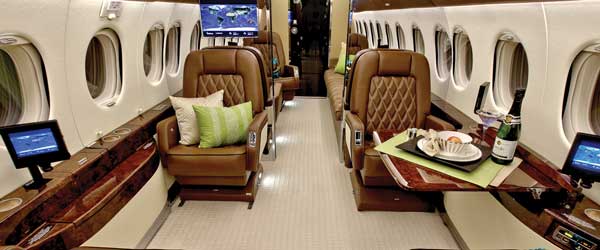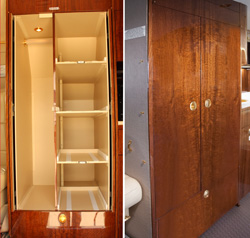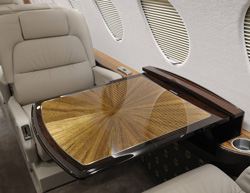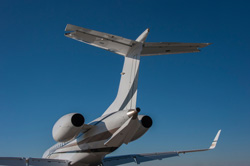
Knowing that many potential aircraft buyers don’t want after-purchase downtime, sellers are looking at interior refurbishment and avionics upgrades that will provide them the greatest return on investment (ROI). Duncan Aviation addresses this by providing some guidelines for increasing aircraft interior ROI in the fall 2013 issue of its Duncan Debrief magazine.
Duncan Aviation’s knowledgeable interior specialists weigh in with ideas to update the interior of an aircraft in “Interior Investments” on page 7.
For example, according to Doug Roth, Aircraft Acquisition and Consignment Representative at Duncan Aviation, “Today’s buyers are looking for a turn-key, ready-to-go, pedigreed aircraft with a current inspection status and a record of who performed the inspections. Although safety tends to trump cosmetics, buyers want an exterior that’s sharp looking and an interior that’s easy to personalize with very little downtime.”
Bob McCammon, an Aircraft Sales and Acquisitions expert, agrees. Just a few years ago, he says, the trend was for business jet buyers to completely refurbish the interior so it reflected their personal tastes. “Not so, today,” says Bob. “Business jet buyers are like current home buyers who want a house that is move-in ready.”
Senior Aircraft Interior Designer Mary Lee suggests that, ideally, an aircraft’s interior color schemes, veneers, and carpet should be less than six years old. She says that busy, patterned carpets in bold colors and light-colored veneers date the interior, so the aircraft won’t enjoy broad appeal on the open market.
Additionally, she says, if replacing or completely refurbishing the interior is not an option, make sure the carpet looks like new—at minimum, remove all spots and stains. As long as the leather on seats is relatively new and the colors are neutral, a thorough cleaning may be all the seats need, too.
Another critical component of an interior is its Cabin Management System (CMS). An aging CMS may detract from the ROI, as well. Steve Elofson, Senior Avionics/Installation Sales Representative, says that today’s business jet owners, and often their families, want the same functionality on their aircraft that they enjoy in their connected offices and homes.
For more information on how to carefully and critically assess an aircraft’s interior with an eye toward maximizing the ROI, read the entire article in the 2013 fall issue of the Duncan Debrief.
The Duncan Debrief is an award-winning business aviation magazine for aircraft owners and operators. Written and designed in-house at Duncan Aviation, each edition includes articles on topics and trends in business aviation. The Duncan Debrief is a free, semi-quarterly publication for aviation enthusiasts around the world.
The Duncan Debrief is available for iPads through Apple’s Newsstand. To install, search for the Duncan Debrief in Apple’s App Store and download by clicking the “Free” button. The app is placed in your Newsstand shelves. Once downloaded, you will receive push notifications each time a new Debrief magazine is published.












